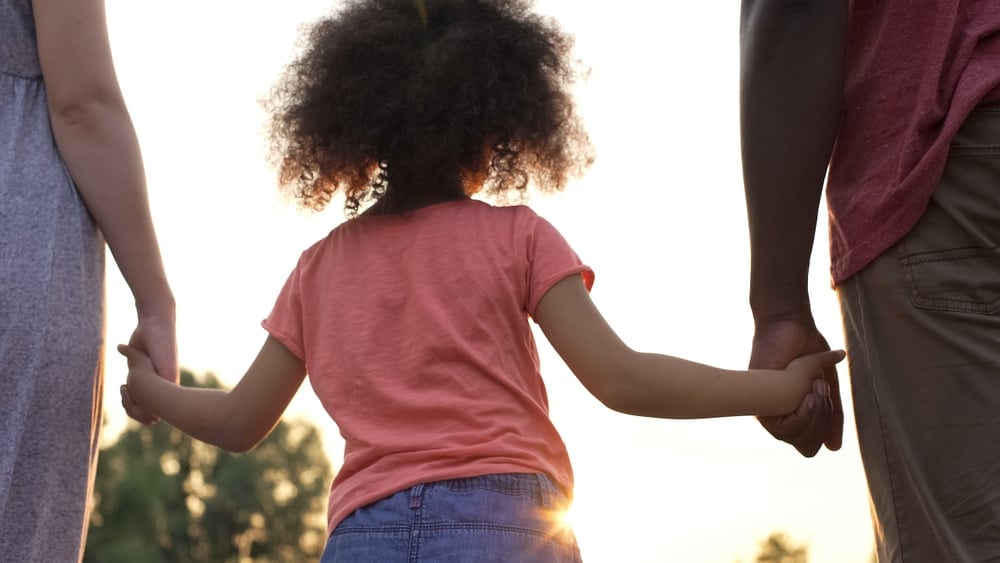No two divorces are alike, but they all have one thing in common – they’re hard. They’re difficult for the entire family, and especially for children who are forced to become nomads as they bounce back and forth between two houses. But what if there was a co-parenting plan that allowed kids to stay in one place while their parents did the shuffling? There is. It’s called birdnesting, and couples across the globe have proven that it’s entirely possible.
The term “birdnesting,” or “nesting,” is when children of divorce stay in the nest (the family home) while the parents rotate in and out of the home, alternating shifts. During their parenting shifts, they stay in the house. When they’re off-duty, they move out and the other parent takes over. It’s an arrangement that allows kids to maintain stability, staying in the same house and keeping their belongings in one place.
When parents aren’t on duty, they live somewhere else. This “other place” can be anywhere that isn’t the nest. Some couples have a shared apartment (that might sound strange, but they’re never there at the same time), while others have their own apartments. Some might choose to stay with friends or family members when they aren’t with the kids.
‘Birdnesting was a great option for our family’
The practice of birdnesting has grown in recent years, but there is perhaps no better spokesperson for the arrangement than Beth Behrendt, who has been living the birdnesting life since 2014, when her three sons were 12, 9, and 5 years old.
Beth first read about birdnesting in “It Doesn’t Have to Be That Way: How to Divorce Without Destroying Your Family or Bankrupting Yourself” by Laura Wasser. She took the idea to her ex-husband Bill, who also saw the benefit of making the rather unconventional divorce arrangement work. And so, they became birdnesting pioneers in their hometown of Fort Wayne, Indiana.
“We both felt it would be great for the kids, but the book didn’t come with an instruction manual. We had to work together to come up with a situation that worked,” Beth said.
One of the biggest challenges was making sure that emotions were put aside for the sake of the kids.
“As with any divorce, there were a lot of emotions. There was anger, there was fear about the future. But at the end of the day, we both asked ourselves what was best for the kids, and we continued to focus on that.”
There were, of course, logistical issues that needed to be worked out. As a freelance writer who worked from home, Beth had always been the one to take care of the household chores and make sure the kids were fed and out the door to school on time. Her husband, on the other hand, was the main breadwinner and spent a lot of time traveling for work.
“Over time, we came up with a list of responsibilities that made sense for us, taking the value of Bill’s career into account,” said Beth, who runs the website Family Nesting.
‘Birdnesting minimized disruption for our kids’
All of the hard work and negotiations paid off for Beth, Bill, and their three sons.
“There was never a big disruption for the kids because they always came home to their house, their dog, and their stuff, all in one place.”
One of the biggest moments of validation came from a therapist who was hired by Beth and Bill to speak to the kids following the divorce.
“The therapist told me that one thing that struck her about my kids was that they never mentioned divorce as a stressor in their lives. She had never experienced that with children of divorce, and she credited that to nesting.”
Beth and Bill continue to live the birdnesting lifestyle to this day, eight years after they started. They intend to continue until their youngest son, currently an eighth grader, graduates high school. They’ve even managed to make it work despite both entering new relationships.
Beth and Bill continue to live the birdnesting lifestyle to this day, eight years after they started. They intend to continue until their youngest son, currently an eighth grader, graduates high school. They’ve even managed to make it work despite both entering new relationships.
“Our partners respect our arrangement. It takes an understanding person to be okay with it. If they’re understanding, that shows they’re secure and appreciative of our commitment to our kids – and that’s the type of partner I want to be with.
Birdnesting in lockdown
Their arrangement was tested in 2020, when the COVID-19 lockdown meant that all three kids were at home 24/7. Bill stopped traveling for work, so he was home all the time, and Beth moved in because she needed to help her youngest son navigate the rough waters of virtual learning. Bill’s girlfriend, a teacher, also moved in (yes, you read that correctly). Somehow, it all worked.
“Bill and I found it was no big deal to both be in the house together a lot, as long as we were clear on who was responsible for what with the kids and the house,” Beth wrote in her upcoming book “Nesting After Divorce: Co-Parenting in the Family Home” which is due to be released in April. Preordering available now.
The pandemic experience prompted a change in their birdnesting arrangement which continues to this day.
“I wanted to keep seeing the kids every day. So even on my non-parenting days, I pick the youngest up from school and spend time at the house with both. Or I’ll spend a weekend at the house so I can help with the boys, and Bill and I can work on house or yard projects. Bill still is not traveling for work. He’ll visit his girlfriend or take short trips, but I frequently just “take over” parenting for a couple of nights and stay at the house even if he is there. (Though, don’t get me wrong, I still do love my alone time at my apartment.),” Beth said.
Beth believes that birdnesting should be seen as a viable option for divorcing parents, unless there’s an obvious reason why it can’t work (such as if one parent is incapable of responsibility parenting alone).
She says that in addition to the emotional and logistical benefits, there are financial benefits to birdnesting.
“Birdnesting can make a lot of financial sense, because there’s no need to maintain two big houses that can accommodate the kids. I have a one-bedroom apartment and it suits me just fine, because I don’t need to have all the kids’ stuff there. I don’t need an Xbox!”
‘If you can’t communicate, birdnesting isn’t for you’
Mandy Walker, a Colorado-based mediator and co-host of the Worthy.com branded podcast “Divorce And Other Things You Can Handle”, agrees that birdnesting can be a financially savvy decision, especially with today’s mortgage interest rates.
“More people are considering birdnesting out of necessity. Even with a buyout, it can be difficult for the other parent to qualify for a mortgage in the same area. If they sell the family home, the parents probably can’t buy two houses in the same place – and that’s disruptive to the kids.”
Walker said that birdnesting allows parents to continue to co-own their family home and sell it at a time that will work better for them in the future.
However, the financial benefits aren’t enough to make it work. Walker said that both sides must commit 100% to the plan, which isn’t an easy one.
“Birdnesting is good for those who are able to accept the end of the marriage without hostility or bitterness,” she said. “It requires a lot more work and communication than living separately in a traditional divorce arrangement – people who can’t communicate shouldn’t even consider it.”
The need for communication is ongoing, and many topics will have to be dealt with as they come. However, Walker said that every couple can benefit from creating ground rules in the beginning, particularly surrounding housework in the nest.
“In my role as a mediator, I spend a lot of time asking who will do the grocery shopping, the dishes, and the laundry. Will the couple have separate rooms in the nest? If they’re sharing a bedroom, what are the rules regarding changing the bed linens before the other parent comes in for their shift?”
Create exit provisions
Walker also believes that every couple entering a nesting arrangement should have exit provisions in the agreement, which is also beneficial when submitting formal parenting plans to the court.
If communication is present in the parenting relationship, Walker believes birdnesting can be a great option for families.
“It provides more stability for the children. Their school stays the same, they get to stay in the same area and do the same activities with the same friends. It also helps children gradually accept the idea that their parents aren’t married anymore; it’s not a big shock.”
But that’s not to say that birdnesting is for everyone. Walker uses a very common scenario of two parents with different parenting styles – one of whom makes the kids go to bed at 9 p.m., and the other who lets them stay up as late as they want – as an example of when it might not work.
“That can be problematic because the kids have to adjust to different rules under the same roof,” Walker said, adding that the stricter parent won’t be happy when the kids are handed to them in an exhausted state every single time.
For parents wishing to give birdnesting a try, Walker suggests they have a meeting once a month where they can talk about what’s working and what isn’t working.
“This isn’t designed to be confrontational, it’s about communication so that you can tweak and fine tune the things that aren’t working as well as they could be. Have the meeting, even if it’s only 15 minutes, and even if you both say that no changes are needed. You can also include the children so that they have a voice in the matter.”
If that communication begins early on, birdnesting can be a great arrangement, Walker said.
“It’s just like marriage counseling. If you start too late, you won’t be able to quickly fix all the problems that have developed. The key is to be proactive throughout the entire process.”






